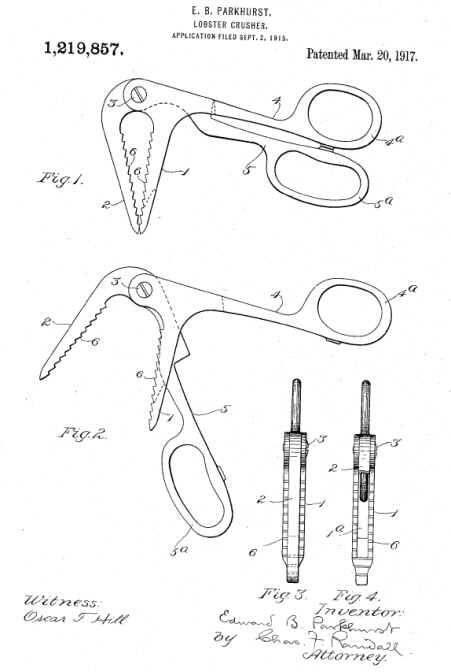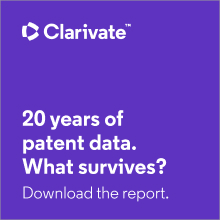| NAPP eNews™/MAR/2017 |
|
Dear NAPP Members and followers, Retention of Members Strategic Planning Patent Agent Privilege Speaking of important issues, unless you have been living in a cave you’ve probably heard about the In re Silver case in Texas state court concerning the existence of a privilege for patent agents. NAPP is submitting an amicus (friend of the court) brief with the Supreme Court of Texas. The case centers on whether a privilege exists for emails between a patent agent and his client. The Dallas appeals court affirmed a decision by a lower state court that held the court was not allowed to recognize or create a “new” privilege. Texas recognizes the attorney-client privilege, and we support the idea that a patent agent working directly with a patent client to prepare or prosecute a patent through engages in the practice of law and is a “lawyer” under the Texas Rules of Evidence. The lower court and affirming appeals court feels they have no authority to create a new privilege. The appellate justice’s opinion in fact never refers to patent agents as “registered” or having passed the “patent bar” (perhaps this was due to bad lawyering – ironic!). Anyway, I personally believe Texas would not be creating a “new” privilege because Texas Rules of Evidence already provide that a person is a lawyer if she/he is authorized to practice law in any state or nation. Thanks to Louis Hoffman and David Stein for their help in writing and submitting the brief. Motivation to Combine or Modify References for Obviousness Rejections I have been dealing with an examiner that frequently uses the phrase “could envision”, as in “given references A&B, a person having ordinary skill in the art could envision combining A&B to arrive at claim 1.” It has been heartening to see the Federal Circuit correct the USPTO, most recently in the form of appeals of IPRs, that the Office must do more. It is not enough that references A&B could be combined, but that a person having ordinary skill in the art would have combined A&B to arrive at claim 1, or would have even looked at the art that B is in. The Federal Circuit took issue with the PTAB’s inadequate explanation of the motivation for combining the two references at issue in the obviousness holding in Personal Web Technologies, LLC v. Apple, Inc. In one passage, the Federal Circuit stated as follows: “The Board’s reasoning is also deficient in its finding that a relevant skilled artisan would have had a motivation to combine Woodhill and Stefik in the way claimed in the ’310 patent claims at issue and would have had a reasonable expectation of success in doing so. The Board’s most substantial discussion of this issue merely agrees with Apple’s contention that ‘a person of ordinary skill in the art reading Woodhill and Stefik would have understood that the combination of Woodhill and Stefik would have allowed for the selective access features of Stefik to be used with Woodhill’s content-dependent identifiers feature.’ Id. at *8 (emphasis added in original). But that reasoning seems to say no more than that a skilled artisan, once presented with the two references, would have understood that they could be combined. And that is not enough: it does not imply a motivation to pick out those two references and combine them to arrive at the claimed invention. See Belden Inc. v. Berk-Tek LLC, 805 F.3d 1064, 1073 (Fed. Cir. 2015) (‘[O]bviousness concerns whether a skilled artisan not only could have made but would have been motivated to make the combinations or modifications of prior art to arrive at the claimed invention.’)” InTouch Techs., Inc. v. VGO Communications, Inc. 751 F.3d 1327, 1352 (Fed. Cir. 2014)(emphasis in original). Personal Web Technologies, LLC v. Apple, Inc. Annual Meeting and Conference Please consider attending the 2017 AMC in San Jose July 27-29, 2017. The theme will be “Uncharted Frontiers”, reflecting that we are under the new Trump administration, as well as 35 USC 101, 112, and the written description requirement, especially for design patents. Thanks to Lisa Adelson and her Committee for their work thus far. Speakers are being contacted and the hotel has been selected (Marriott San Jose downtown). We should be ready to open registration soon! Mentoring Opportunity We received a request to help business students understand the patenting process from officials of Florida Gulf Coast University in Fort Myers, Florida. The mentor could be remotely located, via GotoMeeting®, Skype®, or similar service. Please contact Amy Ridgeway at FGCU if you may be interested: Amy Ridgway Thomas Edison, Henry Ford, and Harvey Firestone all had winter residences in Fort Myers. Contributory Patent Infringement I know this is not strictly a patent prep & pros issue, but one of NAPP’s Values is “Strong Patents.” Part of this in my mind is the idea that accused infringers should not be able to “game” the system. Last month I discussed how prior user rights tend to weaken patents, and may tend to argue for keeping inventions secret. Another weakening of patent rights occurred last month in the Promega decision. Under the February 22, 2017 US Supreme Court decision in Promega, an accused infringer that supplies a single component of a multicomponent patented device device that is then assembled outside the US is not a contributory patent infringer under 35 USC 271(f)(1) because the phrase “substantial portion” is a quantitative (according to the court) and not a qualitative phrase. Promega involved the situation where an accused infringer (Life Tech) was supplying one component of a five component patented apparatus or kit for genetic testing to be assembled in the UK. Keep in mind that 271(f)(1) also covers situations where components are supplied into the US. So, if your client has a patent on a 5 (or 4, or 3, or even 2) component widget, this means that if 4 components are made in Seattle, and 1 is made in Vancouver, BC, then shipped “into” the US to Seattle and assembled in Seattle, that is not a contributory infringing act, since it is only one component. SCOTUS reversed the Federal Circuit, which sided with the original jury verdict of infringement (set aside by JMOL). Life Tech v. Promega https://www.supremecourt.gov/opinions/16pdf/14-1538_p8k0.pdf
On this date in history…. “It is not limited necessarily to use in connection with lobsters.” On March 20, 1917, US Patent 1,219,857 for a “LOBSTER CRUSHER” was issued to Edward B. Parkhurst of Woburn, Mass.
Respectfully, Jeffrey L. Wendt
|

 NAPP eNews™ for March 2017
NAPP eNews™ for March 2017
